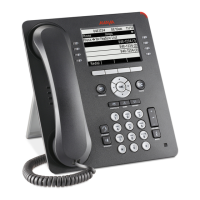HTTP Generic Setup
Issue 1 May 2011 71
lost by a reset if the HTTP server is unavailable. For more information, see Administering the
DHCP and File Servers on page 63.
Note:
Note:
If you used TFTP to provide the binary, upgrade, and settings files to older Avaya
IP telephones, note that 9600 Series IP Telephones do not support TFTP; you
must use HTTP or HTTPS instead.
!
Important:
Important:
The files defined by HTTP server configuration must be accessible from all IP
deskphones that might request those files. Ensure that the file names match the
names in the upgrade script, including case, since UNIX systems are
case-sensitive.
Note:
Note:
Use any HTTP application you want. Commonly used HTTP applications include
Apache
®
and Microsoft
®
IIS™.
!
Important:
Important:
To set up an HTTP server:
●
Install the HTTP server application.
●
Administer the system parameter HTTPSRVR to the address of the HTTP server.
Include this parameter in DHCP Option 242 or the appropriate SSON Option.
●
Download the upgrade file and software application file(s) from the Avaya Web site
http://www.avaya.com/support
to the HTTP server. For more information, see
Chapter 7:
Telephone Software and Application Files.
Note:
Note:
Many LINUX servers distinguish between upper and lower case names. Ensure
that you specify the settings file name accurately, as well as the names and
values of the data within the file.
If you choose to enhance the security of your HTTP environment by using Transport Layer
Security (TLS), you also need to:
●
Install the TLS server application.
●
Administer the system parameter TLSSRVR to the address(es) of the Avaya HTTP server.

